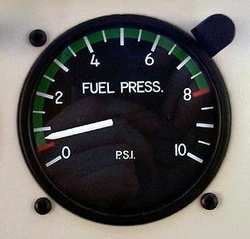172 Ran Out of Gas While Authorities 'Checked For Flight
Plan'
 The AOPA is miffed (and
they're not alone...). The organization notes: a
Baltimore-area pilot and two passengers were injured Sunday after
they were forced to wait so long for clearance into the Washington,
D.C. Air Defense Identification Zone (ADIZ) that they ran out of
fuel.
The AOPA is miffed (and
they're not alone...). The organization notes: a
Baltimore-area pilot and two passengers were injured Sunday after
they were forced to wait so long for clearance into the Washington,
D.C. Air Defense Identification Zone (ADIZ) that they ran out of
fuel.
"Fuel management is the pilot's responsibility," said AOPA
President Phil Boyer. "But having said that, AOPA has repeatedly
warned FAA and the Transportation Security Administration that the
operational gridlock caused by the ADIZ procedures would result in
an accident, and now it appears that this has happened."
AOPA has interviewed the owner of the accident aircraft and will
file a Freedom of Information Act request for the ATC and FSS
audiotapes. AOPA will review the information to determine where the
FAA system failed and redouble efforts to fix the problems.
...but was there a flight plan?
According to the pilot, Dale Roger, in an interview he gave to
The Baltimore Sun newspaper, he circled outside
the ADIZ for about an hour while air traffic controllers tried to
locate his flight plan. All aircraft operating inside the ADIZ are
required to have an active VFR or IFR flight plan.

Roger told the Sun he had a flight plan on file
and active. A spokesperson for the FAA says a preliminary
investigation showed none of the flight service stations that cover
the route of Roger's flight had a record of a flight plan being
filed.
AOPA: 'We told you so.'
In March, AOPA submitted recommendations on how the FAA could
revise the procedures to make them workable while still maintaining
security. These procedures would include established ingress and
egress routes and airport specific transponder codes. Despite heavy
lobbying by AOPA with homeland security officials and the FAA,
these procedures have not been implemented, with the exception of
eliminating the flight plan requirement for closed traffic pattern
operations at two towered airports using a single transponder
code.
On June 9, AOPA received responses from the FAA and TSA denying
the request for ingress and egress routes and stating that the
other recommendations are still under review.
 "This response is not acceptable,"
said Boyer. "As the accident clearly demonstrates, there is a
seriously safety-of-flight issue that is being ignored."
"This response is not acceptable,"
said Boyer. "As the accident clearly demonstrates, there is a
seriously safety-of-flight issue that is being ignored."
[As Mr. Boyer noted, the pilot should not have run out of
gas. His options included diverting, amending his flight plan,
or -- worst case, and sure to cause a truckload of paperwork and
probably a greeting from the cops -- simply declaring an
emergency. Running out of fuel showed poor systems-management skill
and/or poor judgment, flight plan or no flight
plan --ed.]
** Report created 7/1/2003 Record
20 **
IDENTIFICATION
Regis#: 5138G
Make/Model: C172 Description: 172,
P172, R172, Skyhawk, Hawk
Date: 06/29/2003 Time: 1635
Event Type: Incident Highest Injury:
None Mid Air: N Missing:
N
Damage: Unknown
LOCATION
City: BALTIMORE State: MD Country:
US
DESCRIPTION
ACFT MADE A FORCED LANDING FOR UNKNOWN REASONS FOUR MILES
SHORT OF RUNWAY 15/33, MARTIN STATE AIRPORT, BALTIMORE, MD
INJURY DATA Total Fatal:
0
# Crew: 1 Fat:
0 Ser:
0 Min:
0 Unk:
# Pass: 2 Fat:
0 Ser:
0 Min:
0 Unk:
# Grnd:
Fat: 0 Ser:
0 Min:
0 Unk:
WEATHER: METAR KMTN 291645Z 15010KT 10SM SCT034 28/21 A3015
OTHER DATA
Activity: Unknown Phase:
Landing Operation: General
Aviation
Departed:
UNK
Dep Date: Dep. Time:
Destination:
UNK
Flt Plan: NONE Wx
Briefing: U
Last Radio Cont: UNK
Last Clearance: UNK
FAA FSDO: BALTIMORE, MD
(EA07)
Entry date: 06/30/2003
 Classic Aero-TV: In Praise of Alabamas Patriot Aircraft USA
Classic Aero-TV: In Praise of Alabamas Patriot Aircraft USA NTSB Final Report: Cirrus Design Corp SR22
NTSB Final Report: Cirrus Design Corp SR22 ANN's Daily Aero-Term (12.21.25): Dead Reckoning
ANN's Daily Aero-Term (12.21.25): Dead Reckoning ANN's Daily Aero-Linx (12.21.25)
ANN's Daily Aero-Linx (12.21.25) Aero-News: Quote of the Day (12.21.25)
Aero-News: Quote of the Day (12.21.25)





